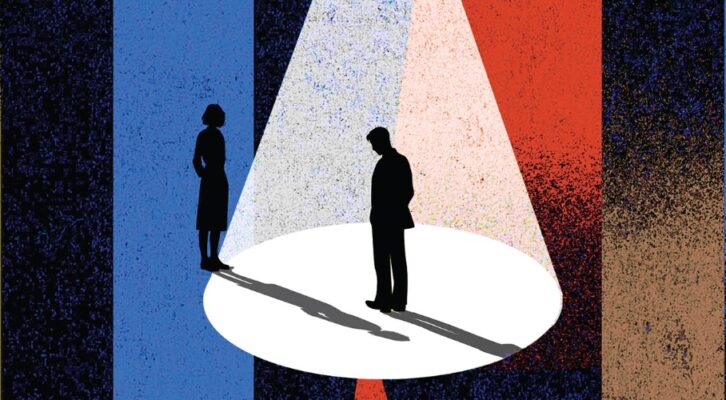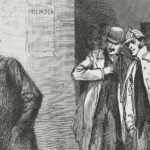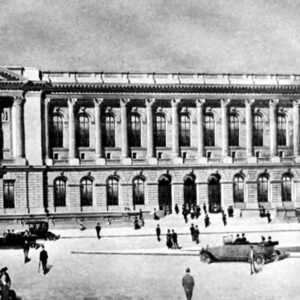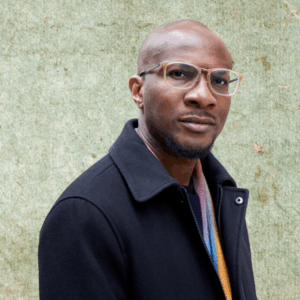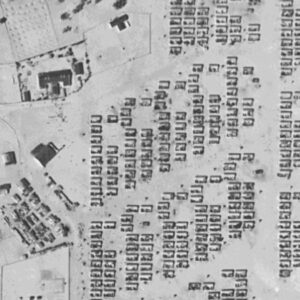
Love in a Time of Plague: Lessons from the Front Lines of AIDS Activism
David France and Tim Murphy in Conversation
Two journalists, who’ve written (respectively) a nonfiction and a fictional saga of 1980s AIDS activism, talk about reviving that seismic moment—and what lessons a digital age can take from it as we enter our own era of challenges
In this anxious and uncertain moment after the election of Donald Trump as president, what can people learn from the AIDS and LGBTQ activism movement of the 1980s and 1990s? Are there connections between that dark time and the era we are about to embark on? Answers may be found in two books, both from journalists: Christodora, Tim Murphy’s critically acclaimed fictional New York City saga that is heavily rooted in the real-life story of AIDS in the city and activists’ response to it, and How to Survive a Plague, David France’s riveting and detailed book version of his Oscar-nominated documentary of the same name, which draws from a stunning trove of interviews, writings and audio and video tape to paint an unprecedentedly detailed picture of the street-level response to AIDS from 1981 to 1996. Murphy and France, who have both written about the epidemic for many publications including New York magazine, sat down to talk about their books—particularly France’s, which came out two days ago (Murphy’s debuted in early August)—a few weeks before the election. But they also continued their conversation a week after Trump was elected.
MURPHY: David, one thing about your book that is so powerful is that you weave your own experience of caring for AIDS-stricken loved ones, particularly your lover Doug [who died in 1992], into a much broader, reported story. What was it like writing this book compared to making the documentary, which came first?
FRANCE: It was like reliving that era in real time for me. I just started therapy for the first time ever, looking back at those years, because they were so urgent that life after it can’t be experienced in the same way. I haven’t felt as in-the-moment as I felt then, and I hadn’t even been thinking about that until I finished the book. That feeling wasn’t sparked for me in making the movie because I didn’t include my story per se. I think all of us who lived and fought through that period were very reluctant to go back to that 15-year period in our minds. In your own novel, Christodora, you capture so well how the trauma of that period was the foundation of a crystal meth epidemic among gay men, an attempt to numb those memories, or even to create a life in the present.
MURPHY: I’m 47 and you’re 57. We moved to New York at crucially different times. You moved here in 1981, right when the devastation started happening, and I moved here in 1991, when it was well underway and we knew how to have safe sex but we were paralyzed by fear. I remember being in my early 20s in 1993 and dating a guy in his early 30s and him telling me that he had already been to three dozen funerals. And I thought, “I will never know what that feels like.” And yet at the same time, amid the sickness and death of those years, the city moved forward with art, culture, etcetera, despite devastating losses. What did that strange dual reality feel like on a daily basis?
FRANCE: I don’t think we noticed the other advancements in culture day to day or year to year because we were watching people disappear, which felt unstoppable. It’s hard now for me to remember how far outside of mainstream culture gay people were then, how disconnected from the fabric of civic life.
MURPHY: And you capture the climate of homophobia at that time really well, particularly the gay bashings that were a terrifyingly normal part of life in the city, particularly after news of an epidemic started coming out.
FRANCE: Even though the post-Stonewall LGBT rights movement was more than a decade old by the time AIDS appeared, there’d been very little ability to cross that bridge over to America. ACT UP [the pioneering AIDS activist group that France chronicles in his book] was the second or third wave of activism after Stonewall that found clever ways to get its message out to the public. It was filled with people who had come from advertising and marketing and design, the industries that create culture, and they began inserting the truth about gay people into the culture. We’d spent 20 years before AIDS building gay urban ghettos with good, solid walls around them, and when AIDS hit, we realized we had to climb back over those walls to reach the greater public.
MURPHY: There’s a point in your book when you say that, after a while, death and loss was almost merely noted as a matter of business. People were incapable of properly grieving, the scale of loss was so vast. When was that moment for you?
FRANCE: Taking care of my lover, Doug, was my singular emotional project for so many years. His death in 1992 was the first of many losses we all underwent in the early and mid 1990s when the death rate surged. I entered that numb space in those years. It was an unrelenting period and there was no way that you could feel fear or grief on that scale. The major period of infection was before 1985, so many people from that period were dying just under a decade later. In my building in the East Village, nearly every apartment was affected. Nearly 80 percent of the people in my building were struggling with us. That’s what the epicenter looked like. Young people were in the streets with canes and wheelchairs. There’s nothing you can do about it in the moment, so you just endure it. But what that does to the human soul…
MURPHY: So once effective treatment came along in 1996 and the death rate plummeted, and the nearly dead started coming miraculously back to life, where did you find yourself in the late 90s through the 2000s?
FRANCE: I was trying to look forward and to grab onto that resiliency that gay people have always had to show. We’ve all been through incredibly tough experiences, from bullying in childhood to life in the closet. So I threw myself into journalism. I have an intense work ethic that keeps me busy. But I also met my current husband, Jonathan, two years after Doug died, and I clung to him. Jonathan was very generous in trying to understand my experience in the plague years, which didn’t happen to him.
MURPHY: It is strange to think that so many gay people somehow managed to go through those dark years without really being affected or involved. You really capture how particularly hard downtown Manhattan was hit.
FRANCE: The ghetto our people started building in the 1950s was below 14th Street, and the idea of “downtown” became a cultural idea. There was a gay population on the Upper West Side but it’s got bigger buildings, so though many of my friends who lived up there died, you couldn’t taste the plague in the air like you could in the West or East Village.
MURPHY: So how did your book evolve, especially in the context of the documentary?
FRANCE: I wanted to write the book first, so in 2009, I went back to a lot of my original reporting from the 1980s and 1990s and created a book proposal. But I couldn’t get anybody’s attention in publishing. People said, “Nobody wants to hear this story. There’s no market for it.” I would argue that it hadn’t been told. Randy Shilts’ And the Band Played On ends in 1985. Nobody had told the story of what really happened after that. But having written that large proposal, I felt an obligation to that history. And I had spent some time watching all that old video. So I thought, “Well, nobody can stop you from putting a documentary on your credit card.”
MURPHY: And you’d never made a doc before.
FRANCE: It was much more challenging than I ever expected, but I got addicted to the slope of the learning curve. I’d never worked with visuals before. I had to throw out words and tell the story using the original video. I learned how to storyboard on a wall with Post-Its, which is how I wrote the book, moving chapters around on the wall. Once the film came out, it convinced people that there was an untold story about AIDS. People too young to have been there were thrilled by the queer activism in the doc and told me that they wish they’d been there.
MURPHY: That’s interesting because part of my writing Christodora was about trying to imagine scenes of activism that I wasn’t there for myself, being in college at the time and just barely coming out of the closet. I’ve always wished I was there, too. Is that weird to hear, given how much pain and grief and death there was at that time?
FRANCE: I realized with the film that young people were telling me that they wish they’d lived in a time when they had power, a way to seize power that was denied them. People feel really neutered today and are so disempowered they can’t imagine a road back. That’s what thrilled them about the film.
MURPHY: Well, we may as well at this point disclose that the election has passed since we started this conversation and that countless people in the urban, progressive, heavily queer circles we live in are scrambling for the right way to resist Trump’s regime. Do you think the ACT UP era of active resistance has passed?
FRANCE: Could we climb on Jesse Helms’ house today and cover it in a huge condom like we did then? I don’t know. Nobody’s replicated ACT UP’s organizational structure [which is detailed in the book]. Occupy Wall Street needed total consensus, which kept them from moving forward. ACT UP only needed a majority. ACT UP needed to ACT. You couldn’t lock yourself in a conversation.
MURPHY: But do you think some of that forward thrust was because many in ACT UP were sick and dying and had nothing to lose?
FRANCE: A lot of the people there were not driven exclusively by a need to save their own lives. There was a lot of fury in that group, a need to vent and scream, and I think that’s why some of their actions didn’t work and why other gay and AIDS groups often spoke against them. Often, they were pains in the ass. But the net effect of all that drove forward this really effective citizen science campaign. They splintered after about six years, but I think it’s remarkable that they cohered and were effective for that long.
MURPHY: Why do you think it cohered for so long?
FRANCE: ACT UP was so many things. It was a place to go for information, to cry, to scream, to try to do some good. It was the place everybody went Monday nights and it needed to be there for all those reasons. It was the public square. There was no Facebook, no way for several people to communicate simultaneously.
MURPHY: Can we ever have that face-to-face ferocity again in the age of social media?
FRANCE: Online platforms have definitely moved people out of real rooms. And decisions made in a room of hundreds of people are galvanic.
MURPHY: A real striking aspect of your book is that there is so much dialogue in it. How did you capture that?
FRANCE: All the dialogue except for my own is from audio or videotape. I discovered that, from AIDS’ earliest years, activists were using tape recorders. Michael Callen and Richard Berkowitz, who would do pioneering work helping gay men understand what safe sex was, recorded their very first phone conversation. I think I got about 98 hours of tape from them. It was a challenge to understand them, to put them in context. Sometimes I found not tapes, but transcripts of tapes. Other people furnished me old date books or journals. But I have to say honestly that I did not find an emotional structure for the book that made sense until I started writing my own story into it. I wrote hundreds of pages before I set it all aside and started writing with a pen, which got me back to 1981, a time before computers. I realized I could not write a story about activism without being present as the witness to what they were doing. Once I started allowing my eyes to see it again, the narrative found its pace. And that was not easy at first because I’m a journalist and I’m not interested in myself. My role is to watch and convey, so I had to force myself into certain parts of the book.
MURPHY: That’s interesting, because I think years of journalism really helped me write Christodora and to create characters where I was channeling the hundreds of women and men with HIV/AIDS, or who fought against it, I’ve interviewed the past many years. I was really seeing their faces and remembering their voices. It made me very focused on capturing the characters’ inner lives, inner monologues, and not being overly concerned with how beautiful or striking my own writing was, not wanting to really call attention to it.
So, going back to the election results, I was thinking about how, for anyone right now who has no idea how to organize against power and threat, your book is like a blueprint for our times. It’s all there in terms of how activists came together, hashed out ideas and priorities, strategized, mobilized, voted actions in or out, used the media to get out their message. And they did not even have social media.
FRANCE: The Trump victory has me thinking about Reagan’s 1980 victory. Everything that Trump has promised and promoted would be a domestic disaster, which is exactly where we were in 1980. We were locked out of power in Washington and we had a new conservative philosophy in which only some people were considered citizens. So if there’s any kind of lessons from ACT UP for us today, it’s how to organize from the extreme outside. And we are all going to be on that extreme outside. Demonstrations are so important, but how do you build a movement that is going to be effective and powerful enough to withstand the coming tragedies?
MURPHY: And how do you? Since you were there.
FRANCE: Not just online, but face-to-face. With bodies and minds. With strategy and longterm goals in mind. The lesson is that the power of the masses was joined to the role played on the inside, the people who empowered themselves with knowledge to force the levers of power to adopting an agenda with the force of grassroots activism behind them.
MURPHY: Do you think Trump is worse than Reagan?
FRANCE: Absolutely. He’s a self-declared sexual predator. He promotes racism actively. I think we need to build a new organization. There needs to be some place where strategies and end goals are debated and fought for and adopted.
MURPHY: I was thinking this morning about the sheer amount of discipline it takes to not merely go down an online horror-porn wormhole and to make sure, every day, we are taking concrete steps of action.
FRANCE: I think discipline is a very good word for us right now.
Feature image: detail from Keith Haring’s “Ignorance=Fear.”











